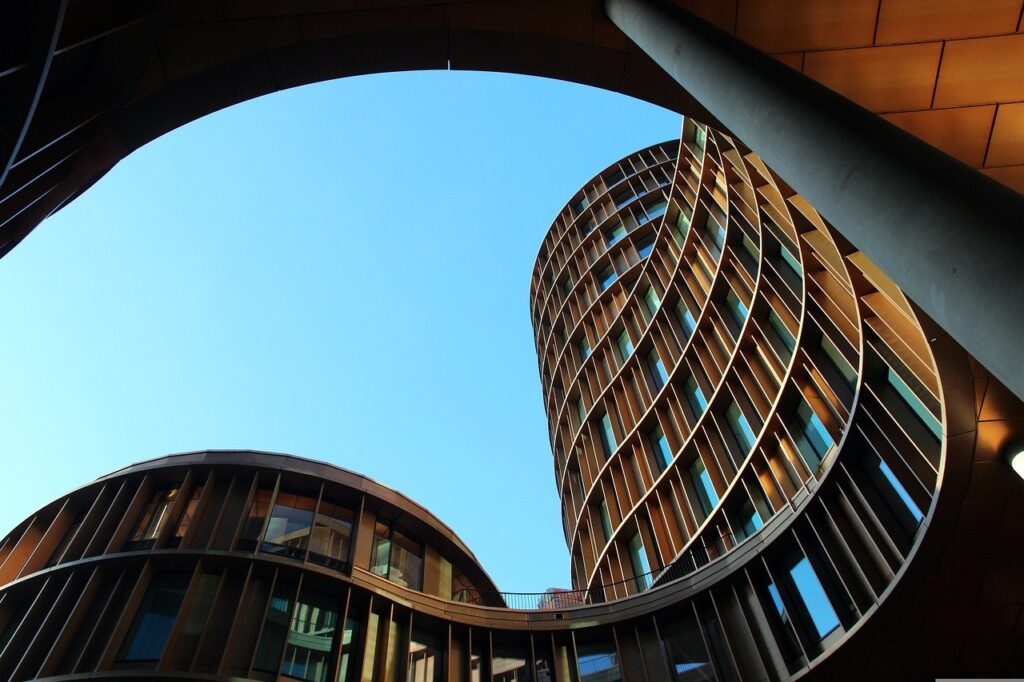CONSTRUCTION METHODS & SUBSTRUCTURE
Suppose you are planning a building project. Then there are many factors you can already take into account in the preliminary stage. One of them is the method of construction, also called the building method. It is often the case that you align the method of construction with the design you have in mind. Consultants such as the architect and structural engineer can advise you on this. Apart from that, the (future) contractor will want his say in this, or you choose a contractor who works specifically within that building method. As a rule, certain building parts, for example and especially the foundation (also called substructure), have already been assigned a building method. For this reason, we will not discuss the foundation in this article beyond what is described below. In addition, this article mostly focuses on the construction method for a house.
It does not mean that another type of substructure is not possible; take, for example, a wooden shed. This structure is lightweight. For this reason, such structures are often constructed on a wooden ring beam, possibly in combination with wooden piles. Generally, however, the foundation is constructed in concrete. This also has to do with durability, service life, etc. Estimating the type of foundation is often not easy. However, some generalized rules can be found about this:
- view the foundation of (relevant) structures in the area
- consult the DINOloket for information on CPTs (soil borings) carried out in your area
- large, relatively light, structures such as sheds are often founded on a (often compacted) bed of sand with or without a foundation beam all around (also to prevent frost)
- one concrete floor (with dilatations) is poured on a sand bed with a plastic film underneath so that the weight is evenly distributed
- heavier structures, such as a multi-story building, are often founded on a concrete foundation combined with poured concrete piles, or if possible driven-in piles
- houses are founded as follows, depending on the location:
- concrete foundation beam with concrete piles (in any form)
- compacted sand bed possibly with applied rubble, in combination with a foundation beam and concrete floor poured on the sand
- compacted sand bed possibly with applied rubble, in combination with a foundation beam and prefabricated floor
- light outbuildings can be founded on wooden ring beams possibly in combination with wooden posts, see previous example regarding the wooden shed
Of course, more rules of thumb are available. If you want to build a house, you will often need a concrete foundation beam with or without piles. The reason for using a foundation beam is firstly to transfer the weight of the superstructure on to the piles and secondly because it serves as a frost barrier. The underside of the foundation beam (or insulation) is often 600 mm below ground level.
Construction methods (upper division)
Basically, the superstructure often depends on the design you choose. In many cases, several construction methods are possible and it is often the cost in combination with planning that will be the deciding factor. It is not necessarily the case that one type of construction method is always cheaper, in fact it can be better (or cheaper) to combine methods. For example, consider a substructure of concrete/limestone combined with a (lighter) superstructure of wood frame construction (further TFC). Depending on your requirements, for example large spaces, a steel structure may be worth considering.
The construction method applies to the load-bearing shell - the shell of the house. The cladding, insulation, etc. are independent of this. In fact, you can usually apply the cladding, insulation, etc. to any construction method. That is not to say that in certain cases it is not wise to choose a specific construction method if you are considering a type of finish.
As a rule, these are the construction methods you may encounter:
- sand-lime brick
- concrete
- timber frame construction (TFC)
- steel construction
In an upcoming blog, we will address these construction methods specifically in each case. These factors, among others, influence the choice of construction method(s):
- Speed of construction (planning), for example, how quickly can the house be wind and watertight?
- Possibility of changes during the construction process, take for example changing wall outlets etc.
- Pre-manufactured (prefab) or in-process making
- Available space
- The level of finishing - Façade finishing, insulation, etc.
- Spans to be made
- Cost report
- Fire resistance
- Airtight
- Bearing capacity and other constructive aspects
- Future-proofing (change of use in the future).
- Building physics aspects
As can be seen, the choice of construction method depends on many factors. You may not be able to decide on each of these factors right away. We will cover these construction methods specifically soon. Keep a close eye on our blog page or subscribe to receive these posts automatically. You will probably have a good idea of the options, advantages and disadvantages of each construction method after reading those blogs. You may already be able to make a choice or give your design a certain direction based on that.
In many cases, you will have a choice of these construction methods (or a combination of them) when building a home:
- Sand-lime = in-situ, slightly longer structural shell, greater possibility of changes during the construction process, less preparation time and good airtightness level
- Concrete = often prefabricated, fast construction, no (or little) possibility of changes during the construction process, costs comparable to sand-lime brick and good airtightness level
- Timber frame construction = prefabricated or in situ, good possibility of airtightness, lightweight construction and greater possibility of changes during the construction process
The substructure, as indicated earlier, will often consist of a concrete foundation with or without piles. Most standard new construction homes are constructed with concrete or sand-lime brick interior cavity walls combined with a prefabricated concrete floor(s). The roof is usually a prefabricated wooden hinged roof. Of course, there are many possibilities in this. The developer makes the choice, often in consultation with the contractor.
If you have any questions about the above, don't hesitate and let us know. On this page you can ask the question to us.

